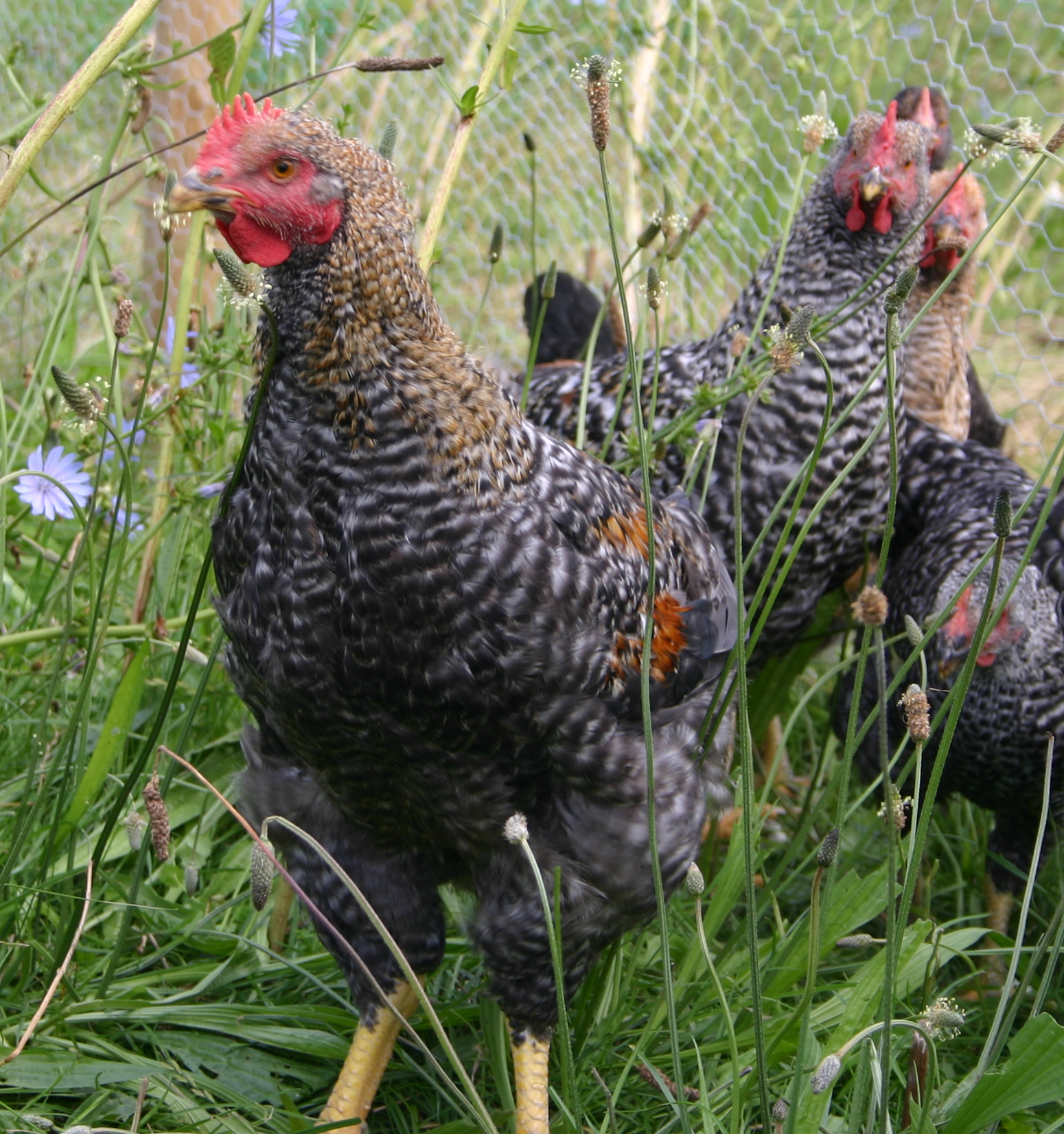Slow growth means higher welfare for chickens
Chickens need to grow more slowly if their welfare is to be improved and there must be greater focus on the nutritional requirements and feed use in relation to the chicken genotype, according to the preliminary results of an experiment with organic chickens at Aarhus University.

The slogan for the chickens could be slow-grow. In an experiment at Aarhus University slower growth gave higher welfare for a clutch of organic broilers. This is one of the preliminary results of a project that studies how different feeding strategies affect the feed intake, growth rate, welfare, health, and meat quality of chicken breeds with different growth rates.
- The current production regulations for organic broilers allow a faster growth rate and a much lower slaughter age than was originally permitted when organic broiler production was introduced in the mid-1990s. This often results in less active chickens, which increases the risk of foot pad lesions, says Klaus Horsted from Aarhus University.
Since organic chicken is an expensive commodity for consumers to buy, it would be an advantage if some added value could be created for the product. This can be done by ensuring a high chicken welfare, a life spent outdoors with a tempting range of food choices and the provision of locally-produced feed. The project has investigated whether the use of alternative breeds and feeding methods could successfully pave the way for this.
In the project the scientists compared new genetic slow-grow chicken breeds with the commonly used Danish organic broiler type. All chickens had access to a large outdoor area with herbs and the opportunity to root out and eat earthworms, bugs and insects. The chickens were also provided with different types of feed, including Danish grown protein crops.
- There was a large difference in the effects of treatments on growth rate. The standard organic feed and whole wheat fed in separate silos resulted in growth rates that differed widely for the three genotypes, which reflects their different growth potentials, discloses Sanna Steenfeldt.
New sources of protein
Half of the groups of chickens were offered a diet consisting of milled peas, rapeseed and lupine and with whole wheat and whole-oat in separate silos. The strategy for this group was based on choice-feeding – but the chickens tended to ignore the alternative protein feed. The chickens on this feeding strategy generally had a lower feed consumption and growth rate across all three breeds.
- Probably, the chickens would have eaten more of the alternative protein diet if they had been introduced to it within the first four weeks of the rearing period, suggests Klaus Horsted.
Peas, rapeseed and lupine were, however, not the only sources of protein for the free-range chickens. Plants such as ryegrass, red clover, bird’s-foot trefoil and lucerne and different types of creepy crawlies were also good sources of nutrients.
- Our analyses showed that the chickens had eaten insects, earthworms and snails. The snails had a very high protein content of 44.8 g protein per 100 g dry matter. Most of the herbs in the outdoor area also had a high protein content compared with many other Danish feed ingredients, says Sanna Steenfeldt.
Exercise and welfare
Chicken gait score was assessed when chickens were 55 and 85 days old. Chickens with a relatively high growth rate often had an impaired gait. A poor gait score means the chicken is likely to be in pain. In the experiment, the fast-growing chicken breed had considerable problems with their gait when fed a standard organic feed, while the other two breeds had no such problems.
However, when the more fast-growing breed was fed the alternative protein feed there were no gait problems, since the feed intake was lower, making the growth rate slower. It was the same picture for plumage and feet conditions. Chickens fed the alternative feed generally expressed a higher foraging activity in the outdoor area.
- Preliminary results indicate that both chicken breed and feeding strategy are important factors when defining a high-quality chicken production from an ethical and resource perspective. If better welfare is to be achieved it is also important to use chickens with a slower growth rate and to focus on nutritional requirements and utilisation of food resources from the outdoor area for the individual breeds, says Sanna Steenfeldt. Together with Klaus Horsted and Margrethe Therkildsen at the Department of Food Science she is also investigating other factors such as meat and eating quality and the effect of the finishing feed.
The project is part of the Organic RDD project called SUMMER.
Organic RDD has been funded by the Ministry of Food, Agriculture and Fisheries and is coordinated by the International Centre for Research in Organic Food Systems (ICROFS).
Further information:
Senior scientist Sanna Steenfeldt, Department of Animal Science, e-mail: sanna.steenfeldt@agrsci.dk, telephone: +45 8715 8074
Scientist Klaus Horsted, Department of Agroecology, e-mail: klaus.horsted@agrsci.dk, telephone: +45 8715 7975
